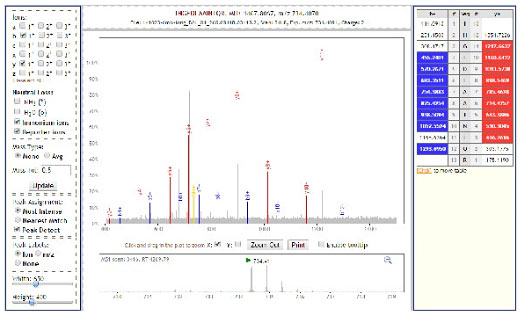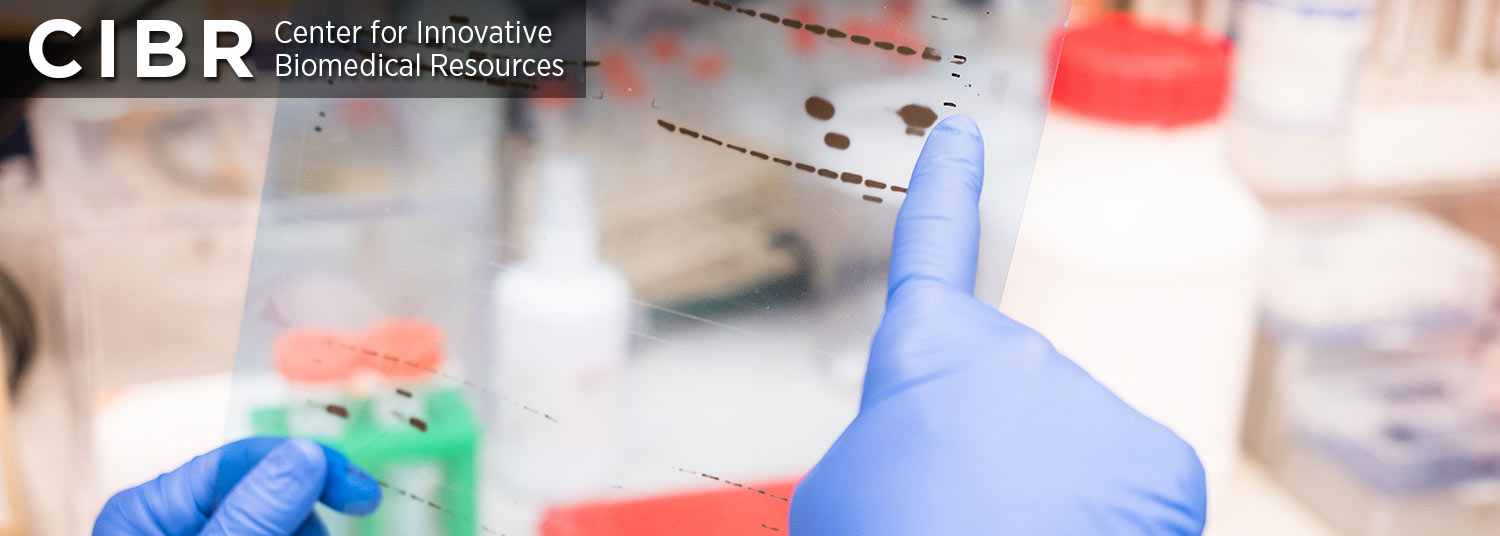Protein Analysis Laboratory
MISSION:
The Protein Analysis Lab provides multiple technologies for the purification and analysis of proteins, peptides and small molecules.
What We Do: Mass Spectrometry is used for intact protein mass determination, protein identification, quantitative global protein profiling and targeted quantification of peptides and small molecules. hPLC techniques are used for analysis or purification of biomolecules and include ion exchange, hydrophilic interaction, size-exclusion, and reversed phase chromatography. Investigators interested in purifying, identifying or quantifying biomolecules should contact the PAL Resource Facility to discuss your project.
SERVICES:
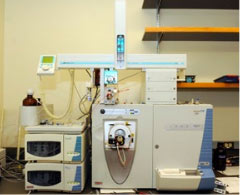 Protein Identification:
Protein Identification:
From immuno-precipitation, affinity pull-downs even complex samples in solution or in-gel.
Protein Profiling:
Determine which proteins are differentially expressed. Compare two conditions from tissues to cultured cells using chemical labeling or SILAC.
Targeted Quanification:
Directly detect and quantify specific proteins of interest. Useful when working with species where antibodies are not available or useful.
Mass Determination:
Of proteins is performed on an ESI-FTICR-MS instrument, that provides high resolution and mass accuracy. Useful for structural analysis of proteins, quality control of purified or engineered proteins, and can be used for confirming small molecule binding to the target protein if that interaction is stable to the ionization technique.
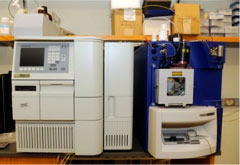 Additional Services:
Additional Services:
Training and hands-on use of the Thermo LTQ LC/MS ion trap system is available.
HPLC Purification/Analysis is available to purify proteins, peptides and small molecules from analytical to preparative scales. The HPLC system is available for use after training.
CORE INSTRUMENATION:
Thermo LTQ Linear Ion Trap Mass Spectrometer
- LEAP PAL HTS robotic autosampler with cooled sample compartment holding up to 576 vials
- Two Thermo Surveyor 4-channel solvent delivery HPLC pumps
- Ion sources include ESI and nano- ESI
- Fully automated with control under Xcalibur software
- Resolving power ~15,000 (FWHM) in enhanced zoom scan mode
- m/z range 150 to 4000
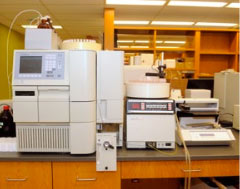 Waters Quattro Micro Triple Quadrupole Mass Spectrometer
Waters Quattro Micro Triple Quadrupole Mass Spectrometer
- Waters 2695 HPLC and 2996 photodiode array detector
- Electrospray ion source
- Scan modes include: Parent ion and Product ion scans, Multiple Reaction Monitoring (MRM) also known as SRM, and Constant Neutral scan
- MassLynx 4.0 Data system
- m/z range 50 to 2000
Waters 2695 HPLC System
- Waters 2695 4-channel solvent delivery system
- 96 vial capacity cooled sample management
- 2996 photo diode array detector
- Flow rate capability from 0.01 to 5mls/min
- Fraction collectors
- Waters Empower Data system
Protien ID Example:
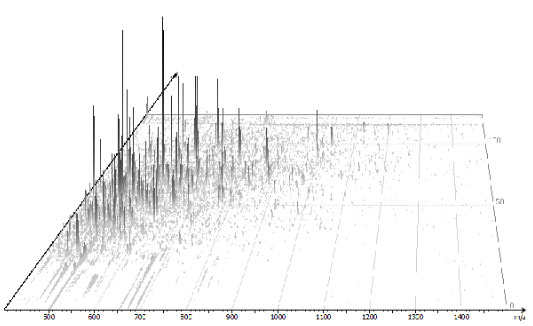
The image above illustrates a complex sample of proteins digested with trypsin and analyzed by liquid chromatography tandem mass spectrometry. The X-axis represents the mass to charge ratio (m/z), the Y-axis is relative intensity and the Z-axis is time in minutes. As peptides elute from the separation column, they are ionized and introduced into the inlet of the mass spectrometer. An analysis cycle consisting of a survey scan of all ions present is followed by isolation and sequential fragmentation of the 5 most abundant of these ions. This cycle is performed repetitively throughout the run. The data, consisting of the precursor m/z and the product ion m/z are used in a database search to identify the proteins present in the sample.
The figure below is an example of one ms/ms spectrum matched to a peptide sequence derived from a database search and demonstrates a confident assignment of this spectrum to a peptide sequence. In a typical LC/MS run the results consist of many thousands of these peptide spectral matches (PSM). Bioinformatic software is used to perform the database searches, assign PSMs to protein groups, and calculate statistical probabilities for the assignments at both the PSM and peptide to protein assignment level.
